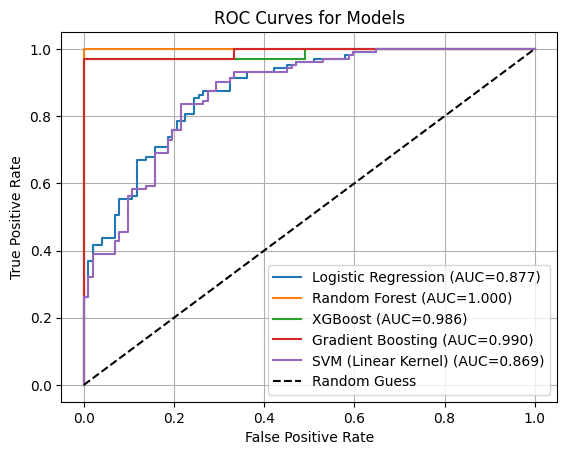An Explainable and Accurate Machine Learning Approach for Early Heart Disease Prediction Using Feature Selection and Ensemble Techniques
DOI:
https://doi.org/10.62019/r0anxk68Keywords:
Machine learning, Heart diseases, ML algorithms, SMOTE, SHAPAbstract
This research introduces a holistic machine learning-based approach to early heart disease prediction, utilizing state-of-the-art ensemble methods and explainable artificial intelligence (XAI). The envisioned model pipeline includes feature selection processes to improve prediction performance and interpretability. Ensemble techniques outperformed more classical models such as Logistic Regression and SVM, with different classifiers such as Random Forest, Gradient Boosting, and XGBoost being thoroughly compared. The best accuracy of 98.54% was attained by Random Forest, Gradient Boosting, and XGBoost, showing the effectiveness of ensemble methods in working with healthcare datasets. The precision and recall measures also drifted close to 1.0, indicating very few false negatives and false positives—essential for medical diagnoses. The AUC measures also supported the strength of the classifiers, with Random Forest showing a perfect 1.0. Visual outcomes confirm the adherence and performance of the suggested methodology in the most significant key performance indicators. This work prioritizes not just predictive performance but also explainability, so the model's choice can be understood by doctors. By combining accuracy with interpretability, this framework offers an accurate decision support system for cardiologists that allows for the early diagnosis and customized treatment plan. The visual analytics offered in the proposed work section also further support the practical relevance and clinical promise of the introduced method.

Downloads
Published
Issue
Section
License
Copyright (c) 2025 Khaliq Ahmed, Khalid bin Muhammad , Malik zohaib Hussain, Abdul Khaliq

This work is licensed under a Creative Commons Attribution-NonCommercial-NoDerivatives 4.0 International License.






